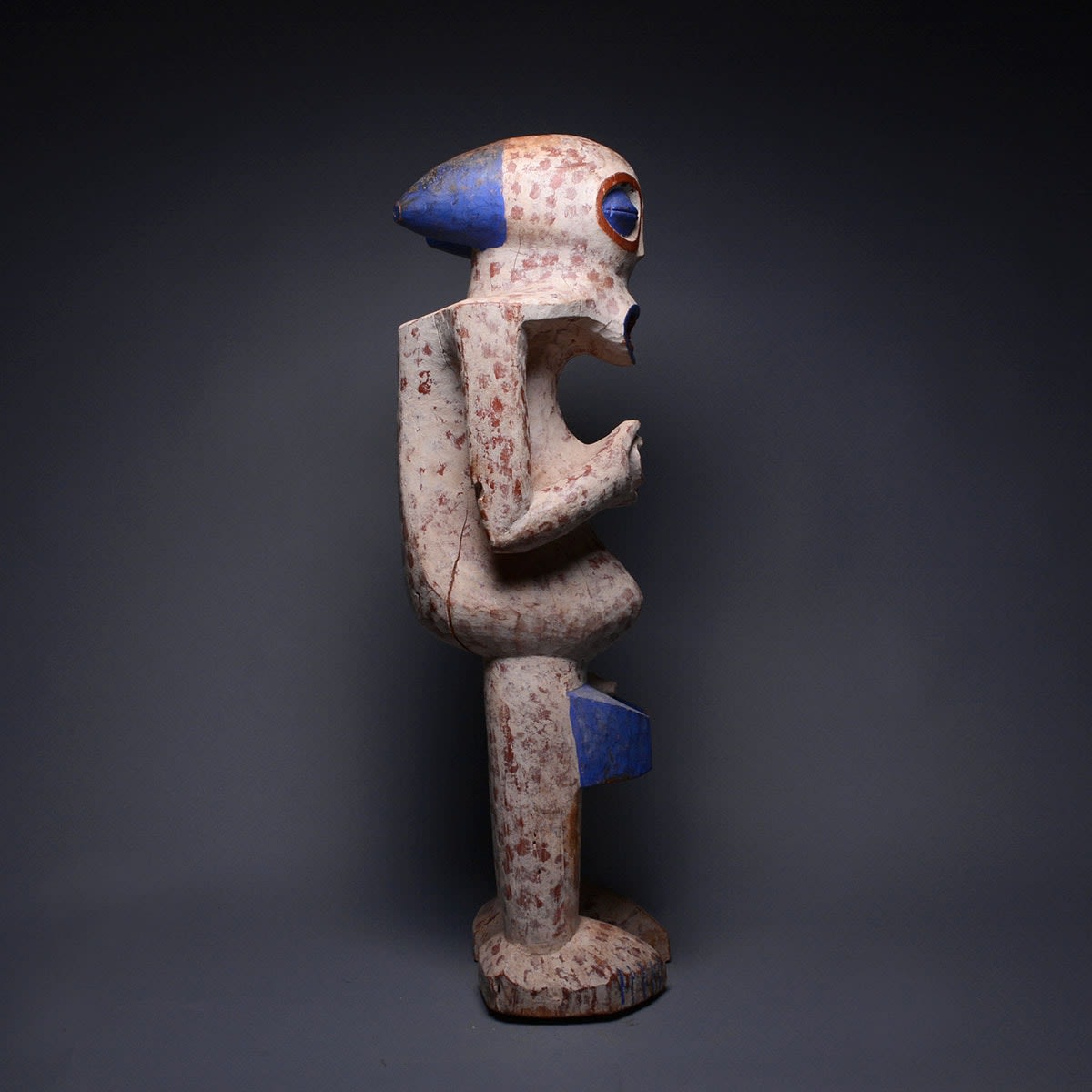Bangwa Wooden Polychrome Sculpture, 20th Century CE
Wood, Paint
111.8 x 35.6 cm
44 1/8 x 14 1/8 in
44 1/8 x 14 1/8 in
PF.5963 (LSO)
Further images
This colourful and demonic-looking polychrome figure was made by Bangwa group of the Cameroonian Grasslands. It comprises a male (?) humanoid figure with solid, straight legs, a corpulent waistline, hands...
This colourful and demonic-looking polychrome figure was made by Bangwa group of the Cameroonian Grasslands. It comprises a male (?) humanoid figure with solid, straight legs, a corpulent waistline, hands gathered on the abdomen and a domed, alien-like head with large eyes and open mouth. The arms spring directly from the jawline. The figure is mainly white with sporadic dots of darker colours. There are bright purple-blue eminences on each thigh, a colour which also occurs on the lips and the lids of the red-rimmed eyes.
The Bamun are one of the three simplified groups in the Grasslands: Bamileke, Bamum, and Bamenda Tikar. They originated towards the north and have been moving south for three hundred years. Their economy is based upon agriculture, which gave rise to great wealth and thus a complex social system. Village chiefs are known as “fons”, and are responsible for dispensing justice and administering “his” (i.e. the village’s) land. His power is moderated by secret societies, although he is technically in charge of these.
Bamin religion is centred on a god named Si, but is more referent to ancestor worship. Ancestors are usually addressed through their skulls, which are kept by the eldest living male in each lineage. Major Bangwa artworks include dancing queen figures, which are displayed only during the funerals of fons. Smaller pieces such as this have less well-defined functions but are generally believed to commemorate important actual or mythical ancestors.
This is a striking and interesting piece of African art.
The Bamun are one of the three simplified groups in the Grasslands: Bamileke, Bamum, and Bamenda Tikar. They originated towards the north and have been moving south for three hundred years. Their economy is based upon agriculture, which gave rise to great wealth and thus a complex social system. Village chiefs are known as “fons”, and are responsible for dispensing justice and administering “his” (i.e. the village’s) land. His power is moderated by secret societies, although he is technically in charge of these.
Bamin religion is centred on a god named Si, but is more referent to ancestor worship. Ancestors are usually addressed through their skulls, which are kept by the eldest living male in each lineage. Major Bangwa artworks include dancing queen figures, which are displayed only during the funerals of fons. Smaller pieces such as this have less well-defined functions but are generally believed to commemorate important actual or mythical ancestors.
This is a striking and interesting piece of African art.







